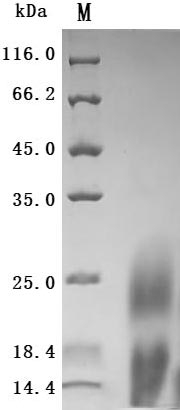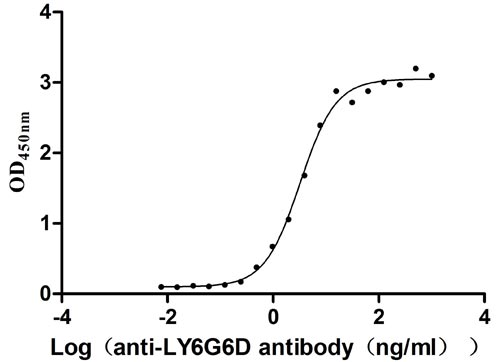This Human LY6G6D recombinant protein was produced in Yeast, where the gene sequence encoding Human LY6G6D (20-104aa) was expressed with the N-terminal 6xHis tag. The purity of this LY6G6D protein was greater than 95%. The activity was validated.
LY6G6D gene encodes a protein of 133 amino acid residues with a molecular weight of 13.7 kDa and an isoelectric point of 6.56. The N-terminal 19 amino acid residues are the signal peptide, and the mature protein is composed of 85 amino acid residues. By bioinformatics analysis, the protein has a Ly-6/UPAR-like domain, which starts with leucine or isoleucine as the N-terminal and has 8-10 conserved cysteines. It is a member of the Ly-6 superfamily of glycosylphosphatidylinositol (GPI)-anchored cell surface proteins, and the 104th amino acid is the GPI anchoring site.
LY6G6D may be related to the occurrence of tumors, the characteristics of tumor stem cells, and the metastasis of tumor cells. However, the signaling pathways and mechanisms of LY6G6D in tumors need further research and exploration. It is expected that LY6G6D can be used as a potential new biological therapeutic target to provide new theoretical basis and methods for tumor treatment research.








